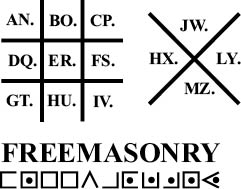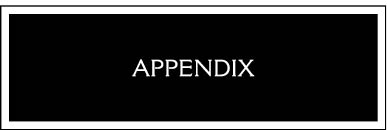
Masonic Decalogue
Excerpt from Albert Pike’s Moral and Dogmas.
“Masonry has its Decalogue, which is a law to its Initiates. These are its Ten Commandments:
1. God is the Eternal, Omnipotent, Immutable WISDOM and Supreme INTELLIGENCE and Exhaustless LOVE.
Thou shalt adore, revere, and love Him!
Thou shalt honor Him by practising the virtues!
2. Thy religion shall be, to do good because it is a pleasure to thee, and not merely because it is a duty.
That thou mayest become the friend of the wise man, thou shalt obey his precepts!
Thy soul is immortal! Thou shalt do nothing to degrade it!
3. Thou shalt unceasingly war against vice!
Thou shalt not do unto others that which thou wouldst not wish them to do unto thee!
Thou shalt be submissive to thy fortunes, and keep burning the light of wisdom!
4. Thou shalt honor thy parents!
Thou shalt pay respect and homage to the aged!
Thou shalt instruct the young!
Thou shalt protect and defend infancy and innocence!
5. Thou shalt cherish thy wife and thy children!
Thou shalt love thy country, and obey its laws!
6. Thy friend shall be to thee a second self!
Misfortune shall not estrange thee from him!
Thou shalt do for his memory whatever thou wouldst do for him, if he were living!
7. Thou shalt avoid and flee from insincere friendships!
Thou shalt in everything refrain from excess.
Thou shalt fear to be the cause of a stain on thy memory!
8. Thou shalt allow no passions to become thy master!
Thou shalt make the passions of others profitable lessons to thyself!
Thou shalt be indulgent to error!
9. Thou shalt hear much: Thou shalt speak little: Thou shalt act well!
Thou shalt forget injuries!
Thou shalt render good for evil!
Thou shalt not misuse either thy strength or thy superiority!
10. Thou shalt study to know men; that thereby thou mayest learn to know thyself!
Thou shalt ever seek after virtue!
Thou shalt be just!
Thou shalt avoid idleness!”
Marcus Vitruvius
De Architectura, Book I—Chapter 6
6. Let a marble slab be fixed level in the centre of the space enclosed by the walls, or let the ground be smoothed and levelled, so that the slab may not be necessary. In the centre of this plane, for the purpose of marking the shadow correctly, a brazen gnomon must be erected. The Greeks call this a gnomon. The shadow cast by the gnomon is to be marked about the fifth ante-meridianal hour, and the extreme point of the shadow accurately determined. From the central point of the space whereon the gnomon stands, as a centre, with a distance equal to the length of the shadow just observed, describe a circle. After the sun has passed the meridian, watch the shadow which the gnomon continues to cast till the moment when its extremity again touches the circle which has been described.
7. From the two points thus obtained in the circumference of the circle, describe two arcs intersecting each other, and through their intersection and the centre of the circle first described draw a line to its extremity: this line will indicate the north and south points. One-sixteenth part of the circumference of the whole circle is to be set out to the right and left of the north and south points, and drawing lines from the points thus obtained to the centre of the circle, we have one-eighth part of the circumference for the region of the north, and another eighth part for the region of the south. Divide the remainders of the circumference on each side into three equal parts, and the divisions or regions of the eight winds will be then obtained: then let the directions of the streets and lanes be determined by the tendency of the lines which separate the different regions of the winds.
The Hermetic Tree of Life
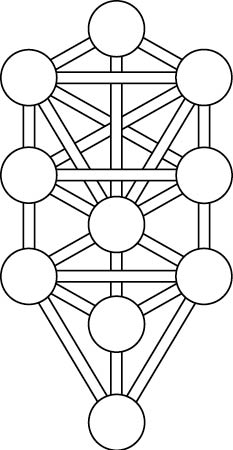
Symbol for the Practice: Knight of the Sun
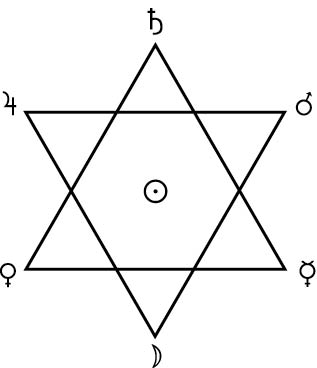
Masonic Ciphers
Several different ciphers are used in Freemasonry. The one used by Dan Brown in The Lost Symbol is called the Pigpen cipher (sometimes called the Masonic cipher, or Freemason’s cipher). This cipher was developed and used by the Freemasons in the early eighteenth century. The example (below) shows how the letters are assigned to a grid.
The word Freemasonry is shown in Latin characters and, below it, it is shown in encrypted form. As you can see, the position of the letter in the grid gives the shape of the code that was used. If the letter is in the middle of the grid, the code of the letter is a square. If the letter is in the middle and it has a dot in it, the code of the letter is a square with a dot in its center.
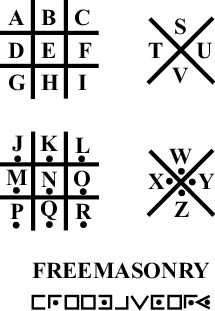
Down through the centuries, several Masonic ciphers have been developed all around the world, based on this same grid.
Below, you will find an English Masonic cipher.
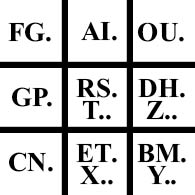
Below you will find a Continental Masonic cipher.
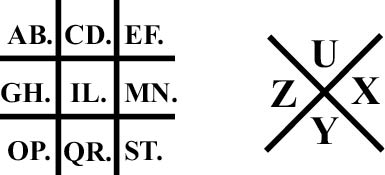 Below, you will find a Masonic cipher that was developed after the eighteenth century. The use of the three points (dots) is symbolically interesting. They may indicate a European origin, because three points (dots) in a triangle are frequently used in Freemasonry.
Below, you will find a Masonic cipher that was developed after the eighteenth century. The use of the three points (dots) is symbolically interesting. They may indicate a European origin, because three points (dots) in a triangle are frequently used in Freemasonry.
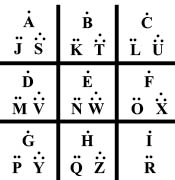
Below you will find a Masonic cipher from the United States. As an illustration, the word Freemasonry is shown in Latin characters. Below it, the encrypted form is shown. You may notice that this encryption is different from the first one demonstrated. This example demonstrates why the code is essential for the decryption of the message.
